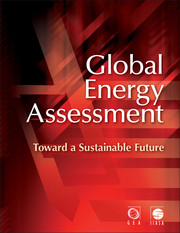Book contents
Chapter 6 - Energy and Economy
Published online by Cambridge University Press: 05 September 2012
Summary
Executive Summary
The three most basic drivers of energy demand are economic activity, population, and technology. Longer-term trends in economic growth for a particular economy depend on underlying demographic and productivity trends, which in turn reflect population growth, labor force participation rate, productivity growth, national savings rate, and capital accumulation (USEIA, 2011).
Several historic shifts are likely to fundamentally alter global demographics over the coming decades. First, as developing nations move from poverty to relative affluence, there is a fundamental shift from agriculture to more energy-intensive but much more productive commercial enterprises. Second, labor forces in the developed countries are aging considerably, which has implications on many fronts, including energy use and employment structures. Third, for the first time the majority of the world's population has become urbanized, with the largest urban centers emerging in developing regions where energy access is a serious constraint. All of these will have immense impacts on the level and quality of energy demand and on concerns about energy security.
Global energy security and sustainability in the twenty-first century will depend less on the total global population than on incomes and their distribution. This in turn will depend to a large extent on how effectively the lack of energy services, which now limit economic opportunities in the less developed regions, is addressed. In addition, energy security will depend on the ability of countries to maintain reliable sources of energy to meet their needs.
- Type
- Chapter
- Information
- Global Energy AssessmentToward a Sustainable Future, pp. 385 - 422Publisher: Cambridge University PressPrint publication year: 2012
References
- 4
- Cited by



